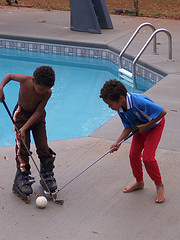Dyslexia programs.
Dianne Craft.
Brain gym exercises.
Dietary interventions.
Usually when your child isn’t performing to the level or ability that is expected for their age based on the scope and sequence found in school, these might be some of the resources suggested. So, are they useful? Yes and no.
I start with No first because I feel it’s crucial to understand why your child isn’t performing to the level or ability that is expected for their age based on the scope and sequence found in school. Somewhere along the line, the way schools teach became infallible, research became “disability-focused,” and one-size-fits-all became accepted. I wrote my book, The Right Side of Normal: Understanding and Honoring the Natural Learning Path for Right-Brained Children, because there is positively, absolutely another way of learning that isn’t found or valued in the schools. Behind almost every learning disability label is a right-brained child. That has to be a red flag that we need to look closer at what is going on.
 The good news is that your creative, inventive, and smart child who doesn’t perform on the time frames found in school is most likely a right-brained learner. There are tons of reasons why your right-brained child learns in the manner he does in the time frame she does. He isn’t broken. She learns differently. My book and this website talks all about the scope and sequence best suited to a right-brained learner, and explains why. It’s like taking off dirty glasses, cleaning them, and then seeing much more clearly. It’s the feeling Drs. Fernette and Brock Eide must have felt when they posed the question in their new book, The Dyslexic Advantage, what if we’re wrong about those with dyslexia being learning disabled; what if they just learn differently? Indeed, what if?
The good news is that your creative, inventive, and smart child who doesn’t perform on the time frames found in school is most likely a right-brained learner. There are tons of reasons why your right-brained child learns in the manner he does in the time frame she does. He isn’t broken. She learns differently. My book and this website talks all about the scope and sequence best suited to a right-brained learner, and explains why. It’s like taking off dirty glasses, cleaning them, and then seeing much more clearly. It’s the feeling Drs. Fernette and Brock Eide must have felt when they posed the question in their new book, The Dyslexic Advantage, what if we’re wrong about those with dyslexia being learning disabled; what if they just learn differently? Indeed, what if?
I believe strongly that right-brained children deserve a well-matched learning environment that honors their natural learning path just like their left-brained peers enjoy. Its my mission and passion to share what that looks like. Before my information, I’ve only found professionals, books, and websites sharing how to conform a right-brained child’s thinking into the left-brained environment and methods. That’s what people like Dianne Craft are doing, or Linda Kreger Silverman, or Thomas Armstrong, or Jeffrey Freed. And even though I found Silverman’s and Freed’s information extremely useful as it pertains to their explanations of right-brained attributes, and quote them consistently in my book, and am honored to receive endorsements from the latter two, they each felt the need to acquiesce to the prominent left-brained learning environment, although Armstrong does it the least.
That means if you wanted to use strategies to make your right-brained child fit into their left-brained world, sometimes it works. For instance, I decided to tutor a friend’s right-brained child who was attending school and receiving the lowest score on his spelling each and every time there was a test. She wanted to help him perform better. I decided to test myself if I could use the information I know about how right-brained children learn and teach him strategies to help  him succeed. After one to two months of twice a week tutoring, I helped my student get the highest score on his spelling tests each time. So, sure, it can work. But is there a price? Sometimes there can be when the child sees himself as a person who can’t work out learning to spell in his own way. That his way doesn’t work or isn’t valued. At least that’s so in certain environments. Yet, each of my right-brained children were able to come to spelling when it was the right time for them in the method that works best for them. Sure, they can go through some self-consciousness about that because the norm is being compared to the left-brained learning environment value system. But that’s because there’s only one understood and valued learning preference: the left-brained way. The good news is there’s a right side of normal, too.
him succeed. After one to two months of twice a week tutoring, I helped my student get the highest score on his spelling tests each time. So, sure, it can work. But is there a price? Sometimes there can be when the child sees himself as a person who can’t work out learning to spell in his own way. That his way doesn’t work or isn’t valued. At least that’s so in certain environments. Yet, each of my right-brained children were able to come to spelling when it was the right time for them in the method that works best for them. Sure, they can go through some self-consciousness about that because the norm is being compared to the left-brained learning environment value system. But that’s because there’s only one understood and valued learning preference: the left-brained way. The good news is there’s a right side of normal, too.

My right-brained neighbor built this home from the trees on the land, yet carries shame for dropping out of middle school because he just couldn't fit in.
So, there are two choices here. If we want our children in a public or private institutionalized learning environment, which most often values left-brained scopes and sequences, we may feel it best to use these types of strategies. But the choice I want to advocate for is to start to give value to the right side of normal as well. Why? Because almost every other person I meet knows someone personally who is negatively impacted by how their right-brained learning preference equals feeling stupid or incompetent. For example, I told my neighbor about my book I wrote and what it was about, and he quietly and ashamedly explained that he dropped out in 8th grade because he just couldn’t fit in to the learning scope and sequence. He’s a successful home builder and furniture maker, yet he carries shame around with him. Then I meet a successful graphic artist who admitted he dropped out in 11th grade for the same reason…and also carries with him feelings of constant incompetence. Every conference I speak at I have a handful of adults who share similar stories. Successful adults who carry around shame based on how they learned in school. It’s just not right. It’s time to change that around. So, these strategies can “work.” But, at what cost?
I remember an acquaintance approached me about her bright first grade son who was diagnosed with ADHD and falling further and further behind in learning. She wanted to know if I had any suggestions. I passionately shared my perspective on the natural learning path for right-brained children and that, unfortunately, the easiest way to accommodate that was through homeschooling or looking for some kind of charter school. She admitted that she just didn’t want to make that commitment. She asked me if  I thought medication would work. Basically, the answer is yes, it can work. Again, at what cost. I share some stories of those costs in Chapter 19 in my book. The medication did “work” at the time for that young man, but he’s now in high school and wondering why he’s different from everyone else. Medication doesn’t explain that. The right-brained learning information does! And it’s a positive and enlightening message!
I thought medication would work. Basically, the answer is yes, it can work. Again, at what cost. I share some stories of those costs in Chapter 19 in my book. The medication did “work” at the time for that young man, but he’s now in high school and wondering why he’s different from everyone else. Medication doesn’t explain that. The right-brained learning information does! And it’s a positive and enlightening message!
Finally, someone asked me if I felt things like vision therapy or brain gym or dyslexia programs were simply attempts at jump-starting natural learning patterns that would evolve given the appropriate time frame for right-brained learners. My short answer is Yes. Can they be useful? Yes and no. There are more questions than answers as it pertains to these therapies against the backdrop of my knowledge about right-brained learning preferences. Why is it that most children receiving vision therapy are right-brained? There are an equal amount of children who need glasses who are left- and right-brained. That isn’t true for vision therapy. That has to be a red flag. Why is it that vision therapy or dyslexia programs hardly ever “work” before the ages of 8 and 10 years old, which is when I say the time frame for most right-brained learners to shift into two-dimensional symbolic work occurs? Coincidence? I pose a lot of these questions in Chapter Nineteen. More research is needed to find the real answers to how useful these programs can be if we understand and honor the natural learning path for right-brained children.
![RightBrainMattersLogo2[1]](https://www.therightsideofnormal.com/wp-content/uploads/2012/08/RightBrainMattersLogo21-300x294.jpg) There are no easy answers right now because our society values left-brained scopes and sequences. Until the right-brained scope and sequence is understood and honored, we won’t know how that will positively impact learning. Will learning disabilities all but disappear? Will a smaller percentage of right-brained children now just need a little extra nudge or a different approach based on what we understand about how they learn to come to certain subjects? Too much of our left-brained educational value system is muddied up into our view on different ways of learning. Our culture has a broken-child mentality, a disability-centered research focus, and an over-achiever pressure that equates to earlier is smarter. It just isn’t true. Instead, what results is an invented form of learned failure for a lot of these labeled children. It doesn’t have to be that way.
There are no easy answers right now because our society values left-brained scopes and sequences. Until the right-brained scope and sequence is understood and honored, we won’t know how that will positively impact learning. Will learning disabilities all but disappear? Will a smaller percentage of right-brained children now just need a little extra nudge or a different approach based on what we understand about how they learn to come to certain subjects? Too much of our left-brained educational value system is muddied up into our view on different ways of learning. Our culture has a broken-child mentality, a disability-centered research focus, and an over-achiever pressure that equates to earlier is smarter. It just isn’t true. Instead, what results is an invented form of learned failure for a lot of these labeled children. It doesn’t have to be that way.
Someone has to take the stance on behalf of the rights of right-brained children to have a well-matched learning environment, resources, and time frames. I will not be like educators, such as Dianne Craft, who admit that the majority of those with learning disabilities are right-brained, and admits that the curriculum most often used is left-brained-centered, yet states, “Helping this child to become successful doesn’t require an entire change in curriculum but rather a change in your teaching strategies for this child.” Why shouldn’t there be an entire change in curriculum to suit the right-brained child? Why teach strategies to fit them into left-brained boxes? Why medicate them to fit in? Why put them through years of therapy to fit in? It just isn’t fair. I see the effects in grown adults. Successful adults. Everyone deserves to be valued for their unique gifts and style of learning and contribution to our society. Right-brained children deserve that as much as their left-brained peers do.
 I have no doubt empowered parents with knowledge of the right-brained information can move mountains. That’s why I talk about these things. That’s why I steer conversations of therapies, interventions, medications, etc., back to understanding and honoring the natural learning path for right-brained children first and foremost. An enormous difference can occur starting there. Upon the foundation of the right-brained information, if more support is needed in learning their way, then we may find it’s far less intrusive to help them out versus doing so without starting with this information. Everyone has to make their own decisions, but my mission and passion in life is to advocate for changes in home, public, private, and charter schools for the benefit of the right side of normal!
I have no doubt empowered parents with knowledge of the right-brained information can move mountains. That’s why I talk about these things. That’s why I steer conversations of therapies, interventions, medications, etc., back to understanding and honoring the natural learning path for right-brained children first and foremost. An enormous difference can occur starting there. Upon the foundation of the right-brained information, if more support is needed in learning their way, then we may find it’s far less intrusive to help them out versus doing so without starting with this information. Everyone has to make their own decisions, but my mission and passion in life is to advocate for changes in home, public, private, and charter schools for the benefit of the right side of normal!
How does viewing the right-brained information as a valid learning process help shift your perspective about how you or your loved one learns? Does it help you say “No” more often to interventions, therapies, and medications in regard to typical right-brained differences to learning? Why or why not?







Pingback: Let’s Pretend our Society Embraces the Right-Brained Learning Information… | The Right Side of Normal